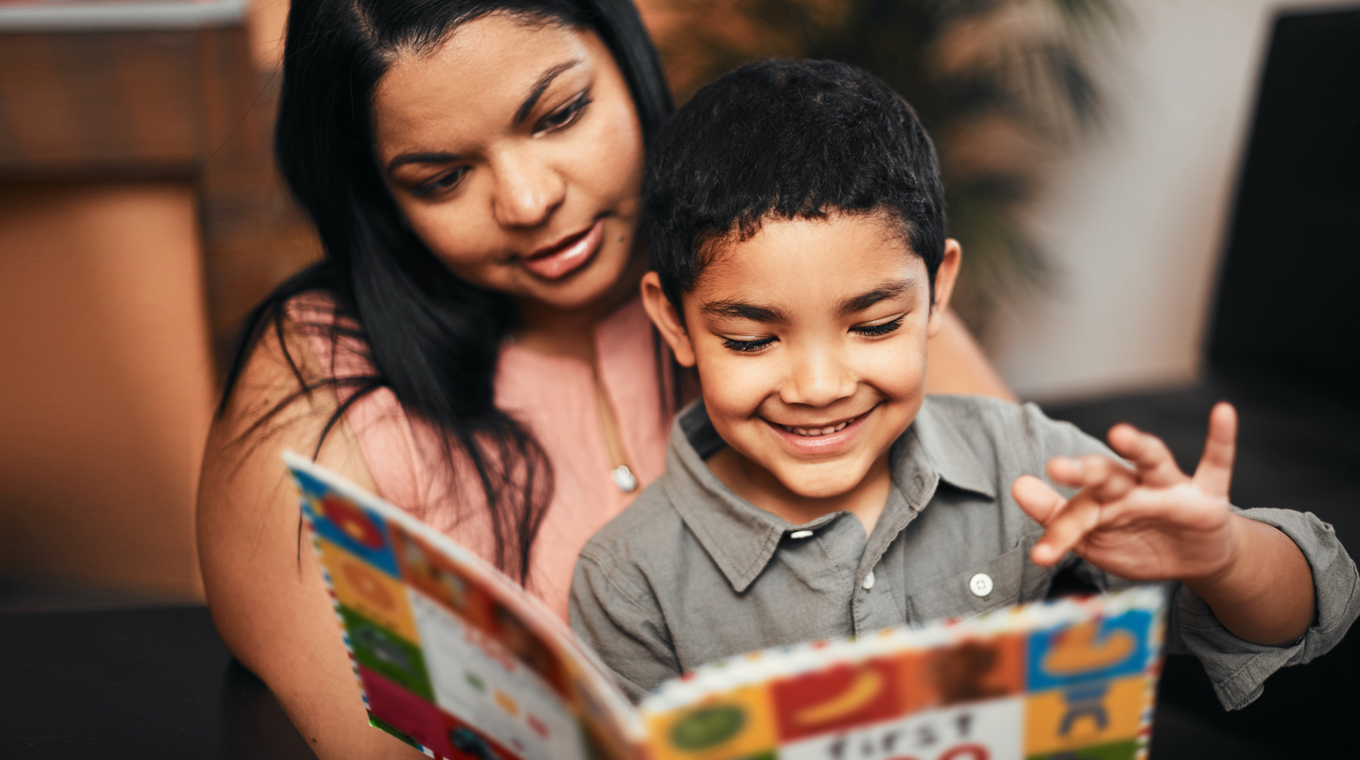
In this article
September not only kicks off the beginning of the school year, but it’s also National Literacy Month. For families looking for homeschool activity ideas for their lesson plans, now is the perfect time to focus on reading together as a family, sharing new books with one another, and encouraging the reluctant readers in our lives.
Literacy is key when it comes to learning about the world, communicating effectively, and interacting in society. According to research by the Barbara Bush Foundation for Family Literacy, the country's low literacy rate costs the US about $2.2 trillion dollars per year in resources as 54% of adults are age 16-74 are reading below a 6th-grade level.
"America’s low literacy crisis is largely ignored, historically underfunded and woefully under-researched, despite being one of the great solvable problems of our time," British A. Robinson, President, and CEO of the Barbara Bush Foundation was quoted in Forbes.com.
Consider incorporating a few of these homeschool activities this National Literacy Month — and beyond — to get your young readers excited about books.
Homeschool activity ideas for National Literacy Month

You may wish to incorporate a homeschool activity to go along with the books and stories your children are reading. Engage your kids with interactive activities that correspond to the books they're reading.
1. Rewrite or reenact classic children's stories
Promote literacy and encourage reading comprehension by having your child retell stories in their own words. For younger children, this could be acting out their favorite fairy tale with puppets or stuffed animals. Children in the early grades could summarize a favorite book, while older kids can write out the story. Kids who do not have the writing skills to complete such a task can dictate their story for you to record.
2. Write a letter to the author
As an additional writing homeschool activity, have your child send a letter to the author. When my older kids were in public elementary school many years ago, their classroom wrote letters to children's book author, Jan Brett. A few weeks later, the author sent them a letter and a signed book in the mail.
While not every author has either the means or the marketing team behind them to send letters and free books to one-hundred 7-year-olds, if your child reaches out to a favorite author they may get an email response back. Contact information can often be found on the writer's website.
How to encourage reading in children

"Motivation is the key in promoting a love of literacy in children. One of the best resources I have found for creating motivation is a shelf filled with books that match students’ interest level and reading level," literacy consultant Kathryn Stark wrote on the education site Edutopia.
"They should be surrounded by titles that reflect the lives of themselves as well as their classmates. When students find titles with characters that look like them and families that resemble their own or their neighbors, their interest level increases. Making these connections also increases student comprehension," Stark advised.
Motivating your child to read could be as simple as incorporating a little bit of fun into your homeschool day. Here are a few ideas on how to get in the habit of reading together.
3. Watch the movie version of the book your child is reading
Whether your child is reading independently or you're working through a family read-aloud, it can be fun to finish off a story by watching a movie inspired by the book. A few of our favorite book and movie combinations include The One and Only Ivan, The Mysterious Benedict Society, The BFG, and of course, Harry Potter.
4. Have a family book party
Another fun homeschool activity many families incorporate into their read-alouds are book parties. Popular in the Brave Writer homeschool curriculum, book parties are simply fun but relaxed celebrations that incorporate elements of the story.
My son and I recently read Book Scavenger by Jennifer Chambliss Bertman. The story takes place in San Francisco, so after we read the book, we had a family book party. I served a Cioppino seafood dish with fresh sourdough bread and Ghirardelli chocolate squares and Its-It ice cream for dessert.
The book is about code-breaking so we did a few cryptograms and played the Professor Puzzle Code Breaker Game. Book parties can be as simple or elaborate as you like. This fun homeschool activity gets kids excited about reading the next book!
How to make reading fun

Erica Arndt is a homeschooling mom who spent several years working through a variety of reading options with her children. In a YouTube video, she admits that the comprehensive reading curricula she used early on when her children were younger, wasn't aligning with her goals for her children.
"I decided that my goal for my kids was that I wanted them to enjoy reading, I wanted them to seek out information on their own about things that they're interested in," Arndt explained. "Give yourself a break and give your kids a break on the stringent reading curriculum and make it more fun and more interesting for them; I think you'll see a change in their desire to read."
5. Visit the library or book and let your child choose a book that looks interesting to them
On a recent trip to Barnes and Noble, I let my son grab a few of the Who Was Series books that piqued his interest. We came home with a book about constellations, one about Area 51, another exploring the Underground Railroad, and a book about The Colosseum.
None of these relate to one another, of course, but they were enough to grab his attention and brought about several engaging discussions and rabbit trails. Give your child full reign of the children's section of the library — their choices may pleasantly surprise you.
6. Take a hike and read a book!
In 2007, an early learning grant in Massachusetts provided funds to start the Storywalk program. Storywalk is a literacy program that combines the outdoors and exercise with getting kids to read. Book pages are mounted on plaques along walking paths so parents and kids can read while they hike. There are now Storywalks paths in all 50 states and several countries.




